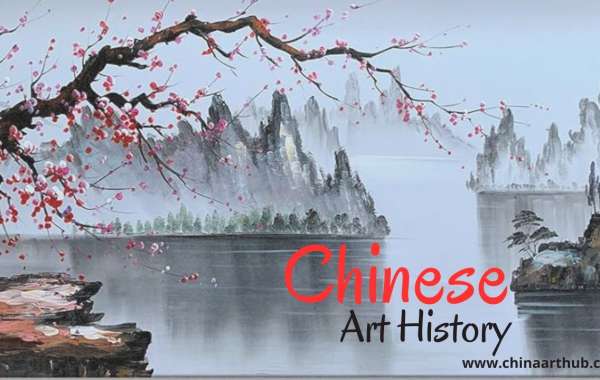Ancient Dynasties and the Birth of Artistic Expression
The origins of Chinese art history can be traced back to the Neolithic period (around 10,000 BCE), where early civilizations created pottery, jade carvings, and primitive sculptures. The emergence of the Shang Dynasty (c. 1600–1046 BCE) marked a pivotal moment, as bronze casting techniques evolved, leading to the creation of intricate ritual vessels adorned with elaborate designs. These artifacts were not merely utilitarian; they served as symbols of power and religious significance, reflecting the values of the society at the time.
The subsequent Zhou Dynasty (c. 1046–256 BCE) further developed these artistic forms. Confucianism and Daoism, two dominant philosophies of the period, influenced artistic themes, emphasizing harmony, balance, and nature. Landscape painting began to flourish during this time, setting the foundation for a significant genre that would continue to evolve.
The Golden Age of Chinese Art: Tang and Song Dynasties
The Tang Dynasty (618–907 CE) is often regarded as a golden age of Chinese art and culture. This period witnessed the rise of Buddhist art, with the creation of magnificent cave temples such as the Dunhuang Caves, adorned with exquisite murals and sculptures. Artists blended traditional Chinese techniques with influences from Central Asia, resulting in a unique fusion of styles.
The Song Dynasty (960–1279 CE) followed, further refining artistic expression. The emphasis shifted towards the natural world, with landscape painting reaching new heights. Artists like Fan Kuan and Guo Xi captured the majesty of mountains, rivers, and forests, embodying the Daoist ideal of harmony between humanity and nature. The meticulous detail and subtle use of color in their works reflected a philosophical depth that resonated with viewers.
The Ming and Qing Dynasties: A Return to Tradition
The Ming Dynasty (1368–1644 CE) marked a revival of traditional Chinese art forms. Ceramics, especially blue-and-white porcelain, became highly sought after, showcasing intricate designs and superior craftsmanship. This era also saw the emergence of literati painting, where scholar-artists expressed their individual styles, often emphasizing spontaneity and personal expression.
The Qing Dynasty (1644–1912 CE) continued this tradition while incorporating elements from Western art. Artists like Xu Beihong and Wu Changshuo experimented with new techniques, blending Western realism with traditional Chinese aesthetics. This era was characterized by a rich variety of artistic expressions, from delicate silk paintings to large-scale murals, reflecting the complexities of a changing society.
Modern Art: The Fusion of East and West
The 20th century brought significant upheaval to China, marked by political turmoil and cultural shifts. Artists began to explore new mediums and styles, influenced by Western movements such as Impressionism and Surrealism. The Shanghai School emerged, blending traditional Chinese techniques with modern themes, leading to the creation of vibrant and innovative works.
Contemporary Chinese art has gained international recognition, with artists like Ai Weiwei and Zhang Xiaogang challenging societal norms and addressing pressing issues through their work. This modern movement reflects the dynamic nature of Chinese culture, where ancient traditions coexist with contemporary influences, creating a unique artistic landscape.
Conclusion
Chinese art history is a profound reflection of the nation's cultural heritage and societal evolution. From the intricate bronzes of the Shang Dynasty to the bold expressions of contemporary artists, each period reveals the interplay between artistic innovation and philosophical thought. As we explore this rich history, we gain insight into the values, beliefs, and aspirations that have shaped China over millennia, reminding us of the power of art to transcend time and space. Whether through traditional mediums or modern expressions, Chinese art continues to inspire and resonate with audiences around the world.




